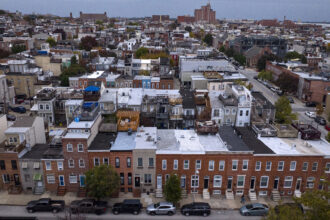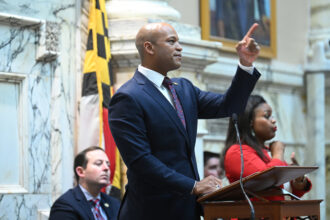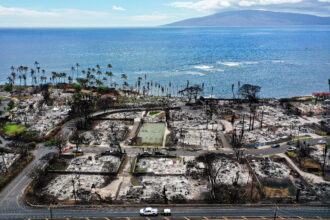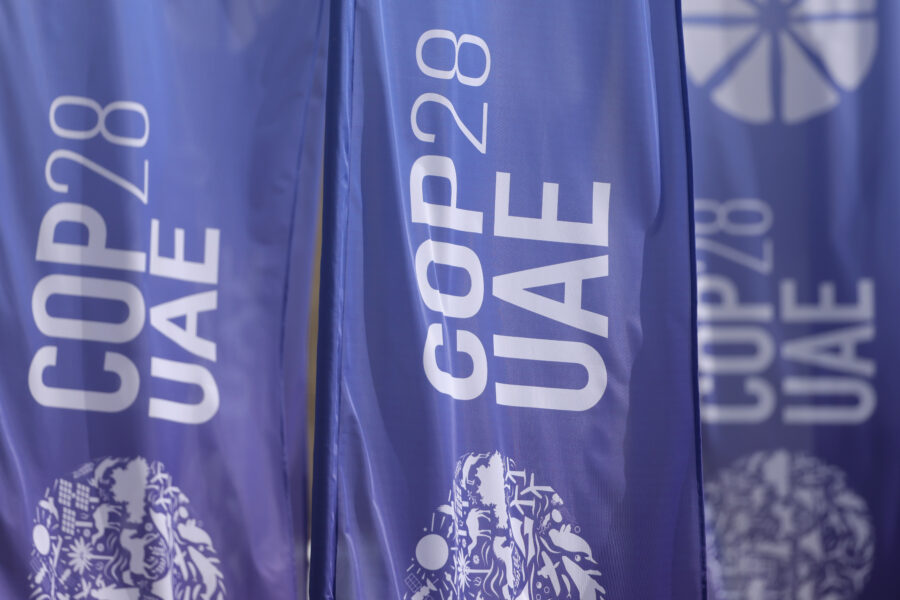Environmental advocates hope an agreement negotiated earlier this month by Baltimore City, the state Department of the Environment and the nonprofit Blue Water Baltimore to upgrade the city’s two wastewater treatment plants will help meet the state’s Chesapeake Bay restoration goals.
Finalized on Nov. 2, the settlement includes a civil penalty of $4.75 million on the city and requires city officials to adopt a timeline for improvements at the Back River and Patapsco wastewater treatment plants. The agreement is set to go before the city’s Board of Estimates on Nov. 15 for ratification and will then take effect as a judicial consent decree in state circuit court.
Once effective as a legally binding consent decree, the agreement will resolve a federal case brought against the city by Blue Water Baltimore in December 2021 and a state action brought by the MDE and Blue Water Baltimore in January 2022.
The settlement calls for 40 percent of the fine—$1.9 million—to go toward restoration projects in the Back River and Patapsco watersheds and will be administered as competitive grants by the Chesapeake Bay Trust. Of the remaining 60 percent, half will be paid directly to the Maryland Department of the Environment, the state’s principal environmental regulator, and half will be held back, to be paid only if the city violated the decree. The city could face additional penalties if it fails to meet repair deadlines and conditions agreed to in the decree.
The city also agreed to install signs and warning lights at the outfalls in the Patapsco and Back Rivers that will turn on if sewage discharges bypass treatment processes. Additionally, third-party engineers will provide oversight to ensure the city carries out the agreed improvements.
Systemic failures at both sewage treatment facilities led to massive releases of untreated sewage and contributed to significant increases in nitrogen and phosphorus pollution in the Chesapeake Bay. Nutrient pollution contributes to algae blooms and formation of oxygen-depleted dead zones in the estuary. Beginning in 2022, state regulators attributed failures at the plants to equipment issues and lack of adequate staffing.
The drawn-out cases in federal and state courts stretched between the previous administration of Gov. Larry Hogan, a Republican, and Maryland’s current governor, Wes Moore, a Democrat.
The state of disrepair at both of the city’s wastewater treatment plants reached crisis proportions during the Hogan administration, with Back River and Patapsco dumping at least 94,000 pounds of toxic chemicals into the state’s rivers and watersheds in 2020, according to a September 2022 report by the Baltimore-based nonprofit Maryland PIRG Foundation. The unauthorized toxic pollution included per- and polyfluoroalkyl substances, cancer-causing “forever chemicals” known as PFAS.
The Environmental Protection Agency’s Enforcement and Compliance History Online database shows about 2.2 million additional pounds in 2021 and 2.1 million in 2022, a combined total of nearly 4.3 million pounds of additional nutrient pollution above 2019 levels, entered the Bay watershed.
“This settlement puts us on the right path to repair and upgrade our state’s two largest wastewater treatment plants, which means healthier waterways, a healthier Chesapeake Bay, and a healthier Maryland,” said Serena McIlwain, the MDE secretary. “We look forward to working in collaboration with Baltimore City as it puts this detailed plan for solutions into action at the Back River and Patapsco facilities.”
Angela Haren, lead attorney with the Chesapeake Legal Alliance, which represented Blue Water Baltimore, said the settlement was a long time in the making. “All the parties felt an overarching desire to settle rather than trying to litigate because we knew that that was going to be better for the people of Baltimore and for our waterways,” Haren said. “So we’re feeling really good about the outcome, which has a very clear plan. If it’s followed that will fix the problems and make sure they stay fixed.”
Evan Isaacson, senior attorney and director of research at the legal alliance, said that Bay restoration efforts will not be successful without the two sewage treatment plants operating in tip-top shape. “It would be virtually impossible for Maryland to meet its commitments under the Bay restoration framework without bringing these two plants not only back into compliance, but in a state of repair that allows their ’enhanced nutrient removal’ filtration systems to function properly. These are two of the three largest single sources of pollution in the Chesapeake Bay’s seven-state watershed,” Isaacson said.
The public notification provisions are a major victory for public health, he said, so people can make informed choices about fishing, swimming or recreating in waters near the plants. “The penalty needs to be big enough to have a deterrent effect. Moreover, much of the penalty is steered right back to be invested in Baltimore communities who have seen significant underinvestment in recent years. I think it was an elegant solution to a tricky issue,” he added.
Keep Environmental Journalism Alive
ICN provides award-winning climate coverage free of charge and advertising. We rely on donations from readers like you to keep going.
Donate NowAllison Colden, Maryland executive director of the nonprofit Chesapeake Bay Foundation, said the historic failure of the two plants caused millions of pounds of contamination to enter Chesapeake Bay and damage water quality for surrounding communities.
“The settlement is an encouraging step forward but is the first step of many needed to rectify the harm these plants have done to the Bay. Much of Maryland’s progress in Bay cleanup has been achieved by reducing pollution from wastewater and we cannot backslide on that progress,” Colden said in a statement.
In the summer of 2021, the MDE notified Baltimore City of continuing violations dating back to 2017 at the Back River and Patapsco sewage treatment facilities. In August 2021, the state regulator issued an enforcement letter, calling for corrective measures to rectify alleged permit violations at both plants.
“This is a huge victory for clean water and for Baltimore residents,” said Alice Volpitta, Baltimore Harbor waterkeeper at Blue Water Baltimore. “Not only does this decree provide oversight and transparency to ensure the plants will stay compliant, but it provides needed funds for restoration in the watersheds directly affected by mismanagement at these plants.”













